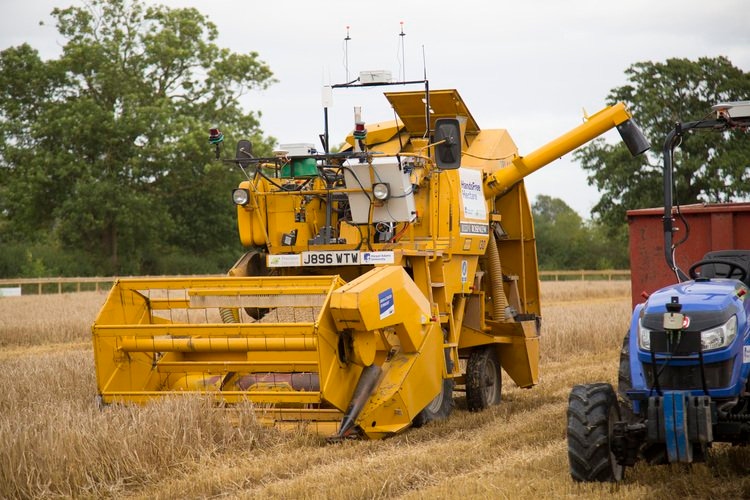
From planting to harvest, no person stepped a foot on the 2.5 acres of barley. Robots and drones handled the scouting and the field work.
The project called Hands Free Hectare is collaboration between Harper Adams University and Precision Decisions based in the United Kingdom. According to a statement by the groups, the project “aimed to be the first in the world to plant, tend and harvest a crop with only autonomous vehicles and drones.”
The two groups proclaim the robot-produced barley crop a success, and they said they did it all relatively cheap by using off-the-shelf, open-source technology and equipment, including a 25-year-old combine. The idea behind the Hand Free Hectare effort is not a new one, but it is an interesting case study showing us that theory has moved to practice, at least on a small scale.
“Farmers one day will be able to release a fleet of robots to work their fields,” is statement I’ve heard many times for more than two decades, and the idea for such a fleet goes back much farther. Many smart people and a lot of big money have actively tried to make that statement a reality. And, I’ll be honest with you, it’s an enticing vision.
Autonomous vehicles linked to big data information is the direction agriculture is going, whether we like it or not, because that is where our society is heading. And the battle cry of those who champion such direction say it will pave the way to more precise and efficient industries, including agriculture.
Don’t get me wrong; I’m not poo pooing technology. Precision technology is an amazing venture and a compatible marriage between one of the world’s oldest professions and the most-impressive advancements man has made in recent decades.
We will see sooner rather than later how agriculture will embrace autonomous systems such as the Hands Free Hectare project or how it and other similar efforts will be scaled up to meet the demands of modern agricultural production needs. But I believe we will always need enough monkeys around to mash the right buttons, and we should never underestimate or take for granted the human hands and footprints needed to correct technological hiccups or to strategize and make decisions in ways technology will never be able to fully replicate.
The paradigm of highly technical, precise agriculture is already upon us and is keenly on display on real-world farming operations across the country, and that’s a good thing. But I still believe in a much older paradigm: For many years, successful farmers and agriculture experts have told me and others that the most important thing a farmer can put in his field is footprints.
Good luck, take care and thanks for reading.
About the Author(s)
You May Also Like






